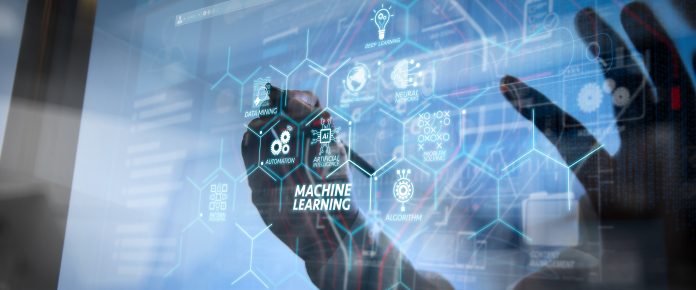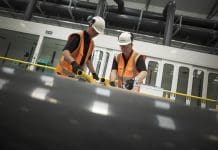In this article, Wondrwall explains to PBC Today the need for the increased use of AI and automation in the pathway to net zero and the digital energy revolution
The government’s Energy Security Strategy looks at how we can protect and grow our own domestic production of energy and not become too reliant on imported oil and gas to address both immediate geopolitical issues and the transition to net zero.
The statement has been widely received as a positive step forward for the decarbonisation agenda with significant commitments to renewables and sources of zero-carbon energy. Many political commentators though have criticised the government’s strategy for its inability to tackle the current energy pricing/cost of living crisis.
A comment that is particularly relevant when you look at the £20 bn investment required to build and commission the UK’s first new nuclear power station in a generation.
The same level of investment in domestic solar PV and battery storage would help to reduce the energy bills of over 2.8 million UK households, would generate 8GW more renewable energy, and reduce people’s annual energy bills by over £700 per annum.
Whether the economics are questionable or not, the flaw in the policy could be overlooked if it was apparent that the proposed strategy would indeed improve our future national and energy security. By continuing to focus our energy policy on a centralised energy model though, does the government’s position actually fail on both counts?
How a digital energy revolution will help to tackle demand
There is also a question on why we are not tackling the challenge of energy demand. There is a well-used phrase that the “cheapest form of energy is the energy we do not use”, so should we also be looking at how we intelligently consume energy, the technology, and behaviour involved to do this as well as the focus on how energy is generated and supplied to us.
Many may wonder what is wrong with our current centralised energy infrastructure. The UK has made some of the world’s leading sustainability commitments. Our increased investment in renewables production has certainly helped the UK to substantially diversify our energy mix. However, the energy network has not seen significant innovation since its inception.
It remains a top-down distribution model, which is built around a few large-scale power producers. The system was built for a different time and different needs. At the moment we have a passive consumer market and inability to truly understand energy demand.
Can our infrastructure deliver our future energy needs?
Many leading academic institutions and energy innovators are concerned over our infrastructure’s capability to deliver our future energy needs in a way which economically viable and socially just. This final point is particularly relevant when we look at the current spike in energy prices. Any decarbonisation transition cannot be one that only the wealthy can afford.
The University of Oxford recently published a statement as part of their Project LEO, a trial in Oxfordshire to build a broad range of evidence on the technological, market and social conditions needed for a greener, more flexible, and fair electricity system: “The Grid Edge will become the epicentre of the energy system in the future as we transition to a zero-carbon energy system based mainly on electricity with highly distributed generation and a doubling of demand as millions of people make the change to electric vehicles and electric space heating.
“It will need to be managed very efficiently and smartly if we are to accommodate the numbers of assets required to work together in balancing the local network without immediate and massive investment in new infrastructure.”
Innovation in the built world will be the key to safeguarding our long-term energy position
The term Grid Edge can be defined as the points in the electricity grid that are closest to the end users of energy (i.e., homes and businesses). If the academics and industry innovators are right and that innovation within the built world will be the key to safeguarding our long-term energy position, what does this mean for the housing and construction industries today?
Firstly, the housing and construction industries need an awareness of regulatory change (especially with regards to P 375 and DNO ED2) which is currently occurring that will drive the future participation of consumer energy assets in the energy systems of the future. It’s not unthinkable to see how this shift in public policy could result in future adjustments in building regulations as we are seeing this year with updates to Part L.
The technology to enable localised energy generation and storage is becoming increasing available and cost-effective. The biggest challenge is the level of granular data analysis required to effectively balance both sides of the Grid Edge. This is where Artificial Intelligence (AI) is going to sit and bridge the gap between housing and the grid. AI is so intrinsic in our daily lives now we don’t even realise it.
From the way our smartphones analyse countless data points in under a second to identify our face and unlock a device, through to our vehicle applying emergency braking upon detecting a pedestrian, AI enriches our lives through convenience, enhancing the speed, precision, and effectiveness of human efforts. The Harvard Business Review recently reported that AI-based machines are “fast, more accurate, and consistently rational”.
AI will drive sustainability and help us to meet environmental targets
AI will ultimately help us to live sustainably without impacting significantly on our existing lifestyles which would be essential if we are to meet our environmental targets within the current energy infrastructure.
While it is possible for families to sit down and cook our family meal at 2 am (when the current supply is at its cheapest) the reality is that people will most likely not divert too far away from their existing patterns of behaviour.
So how can their behaviour be helped to adapt? Behaviour change will play a big part in our sustainability efforts. The removal of human error in our daily lives can lead to increased sustainability, reduced CO2 and lower energy bills.
A digital energy revolution will change the way we think about housing
Developments in machine learning and AI-based systems means that the technology capable of balancing end-user demand with supply is no longer the thing of science fiction. Domestic Energy Management Systems are commercially viable and empower individuals to reduce their carbon footprint, cut their energy bills and take a more active role and participate with our energy system right now.
Ultimately, a revolution is coming. A digital energy revolution that will change the way we think of our homes and the sustainable communities we live in.
Whether the industry decides to look at this development as it is picking up the tab for poor public policy or view it as an opportunity to differentiate and strengthen the communities, they are creating this is a vast opportunity to make a positive contribution, not only to our long-term viability as a species but also to the day-to-day lives of the industries customers by creating a pathway to a more democratised energy system.

















